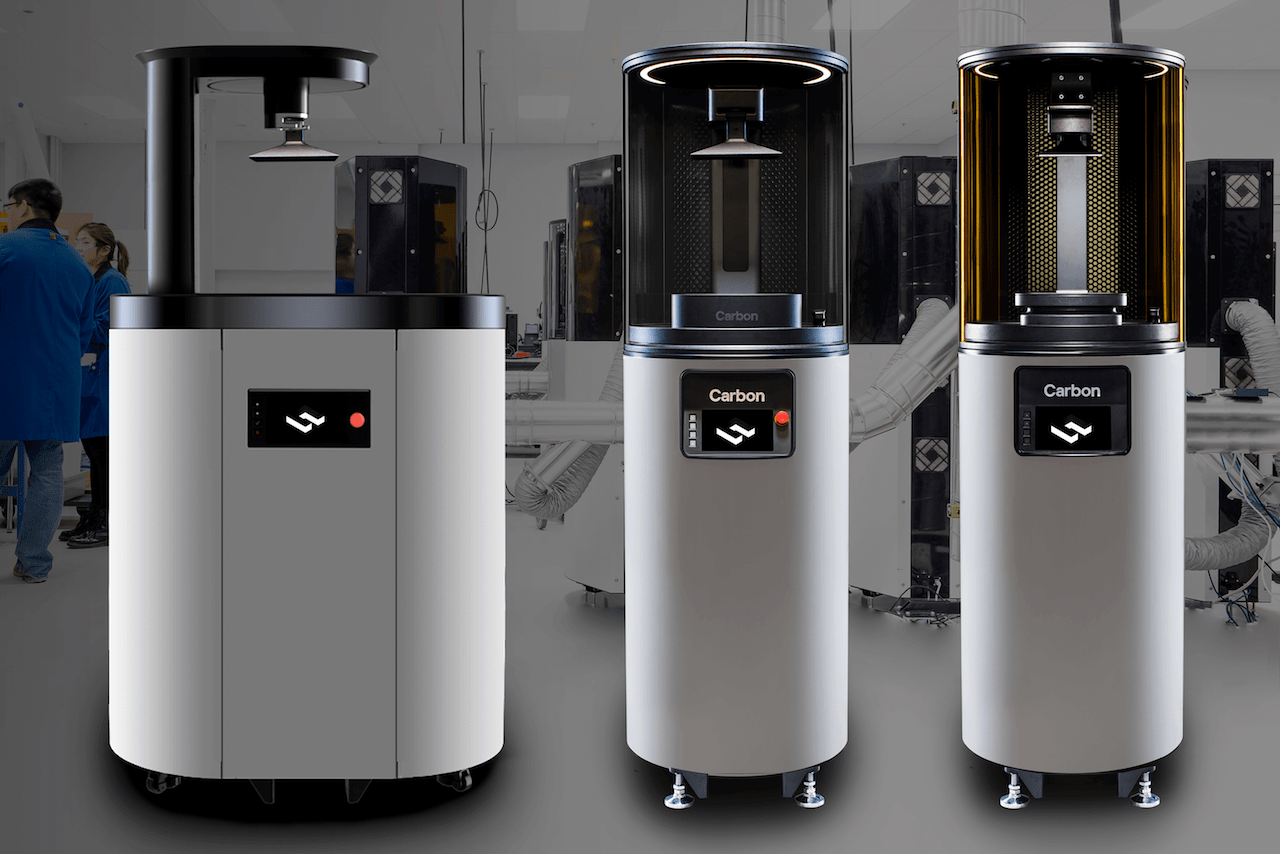
Carbon introduced a couple of new items that should make their products far more interesting to those intending on production use.
The problem with almost all 3D printers when considering “production” is that they are not designed for production. They are designed for prototyping. They require human attention at frequent points during their operational cycle. They require post processing that often requires use of unusual equipment and is very often completely manual.
These are not the characteristics that would meld easily into an efficient production line.
Thus, Carbon – and multiple other leading 3D printer vendors – have introduced accessory systems that ease this production integration. Typically such systems are modular to allow for customization to the varying needs of customers, and that’s certainly the case for Carbon’s new SpeedCell.
What is it? They explain:
The SpeedCell™ is a system of connected manufacturing unit operations that enables repeatable production of end-use parts at any scale. The M Series printers and the automated Smart Part Washer are the first in a series of modular offerings that allow a wide range of industries to design, engineer, make and deliver end-use parts with one common manufacturing workflow.
The first element in the SpeedCell system appears to be the “Smart Part Washer”, which handles a critical post processing step for prints emerging from Carbon’s equipment. Here’s how they describe it, emphasis mine:
With OPTIMIZED wash protocols, every part is CONSISTENTLY cleaned with MINIMAL MANUAL LABOR, resulting in lower per part cost. Our next generation software delivers AUTOMATIC, part-specific wash protocols, process control data for PART TRACEABILITY, and regular software updates.The Smart Part Washer delivers SIMPLE, REPEATABLE part washing, enabling MANUFACTURING AT SCALE and environmental stewardship.
Get it? They want to make the life of production easy, and at least for this portion of post-processing, they apparently do.
One interesting feature of the Smart Part Washer is its ability to use NFC technology to automatically select part washing protocols for consistency.
Like their other equipment, the washer is available by subscription only, at USD$10K per year.
i expect that they’ll shortly introduce several other modules to the SpeedCell system. Perhaps we’ll see an automatic material handling system, or perhaps a robotic system to unload completed prints and transfer them to the cleaning station. There are a number of possibilities, but only Carbon knows what they will do next, which will be driven by their client needs.

Carbon has also released a new 3D printer, the M2, which is considered to be part of the SpeedCell system. It appears to be very similar to their original M1 3D printer, except that the build volume is said to be double the size. The M2 offers a 190 x 118 x 326mm build volume (7.3L), whereas the M1 is smaller at 141 x 79 x 326mm (3.6L).
Like its predecessor, the M1, the M2 is also available only by subscription, a unique business model in the world of 3D printers. While the M1 is set at USD$40K per year, the M2 is priced only slightly more, USD$50K per year for near double the print volume, plus an ability to work with the SpeedCell modules in the future.
What I find interesting about this announcement is the reinforcement of a key transformation in the 3D printing industry towards production capabilities. For years, literally decades, 3D printers languished as “mere” prototyping machines in labs and were typically manually operated. But with the recognition that 3D metal and plastic printing can produce truly production-ready parts for many industries, 3D printer manufacturers have had to realize their equipment is only part of a much more complex manufacturing process.
What we’re seeing is the very beginning of a significant change in how things are made. In future years extremely complex and highly optimized products will be produced largely automatically with the descendants of today’s equipment.
Via Carbon

